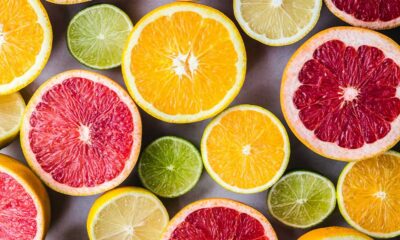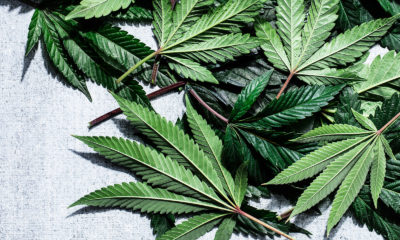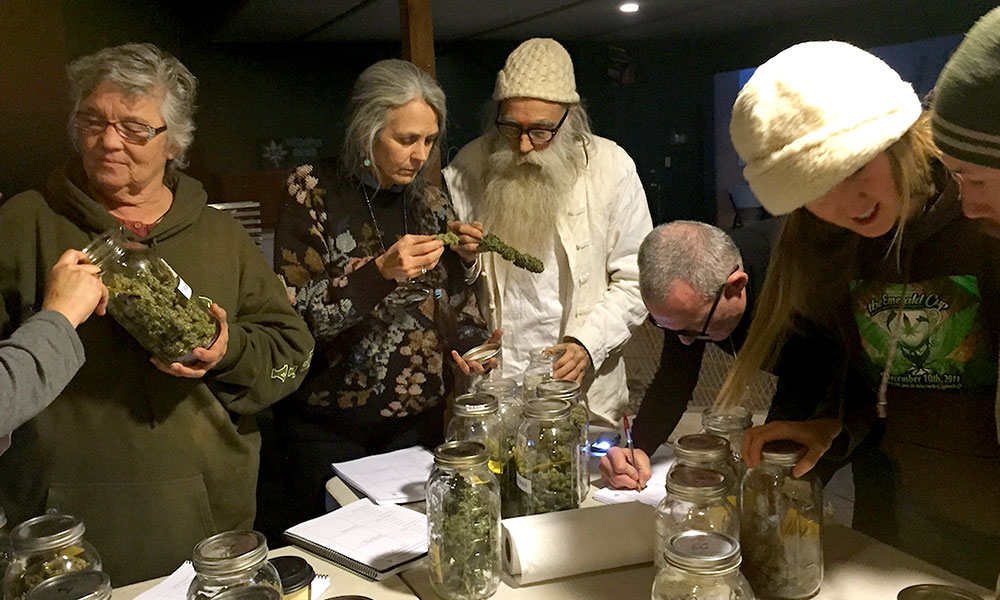
Cannabis
Beyond the Terpenes: Volatile Compounds in Cannabis
The way cannabis smells isn’t always indicative of the dominant terpenes. Long-time Emerald Cup Judges Swami and Nikki have learned that many different aroma profiles create the total smell of the flower, which can all produce different mental states. It’s not just about THC and terpenes.
As judges for the Emerald Cup for nineteen years, Nikki and I have had the unique privilege of sampling several thousand cannabis flowers from the world’s premier cannabis cultivation counties in California. One year, we sampled over 600 entries in the space of a month. These bouts of concentrated sniffing have shown me that there’s an enormous range of smells, aromas, fragrances and stinks that cannabis flowers can present.
Identifying Aromas
In the early days of the Cup, most entries were OG’s, diesels and “chemies” or solvents. Soon, entries with floral smells were entered and then some “blueberries.” For convenience’s sake, the judges began to organize the hundreds of glass jars on the table into rough categories—at first, mostly gasses or florals.
One year, “In the Pines,” with its refreshing new pineapple smell, swept the competition away. A few years later, the tangy and citrusy smells arrived; after that came the cakes and desserts. Many of the same aromas were sensed on numerous samples, but some fragrances were very rare.
Over the years as judges and connoisseurs, we have experienced cannabis flowers smelling like burnt rubber, tar, chlorine, sour milk, baby poop, garlic, roast beef, roast chicken, mothballs, banana, strawberry, airplane glue, diesel, kerosene, gasoline, pine sol, citri-sol, guava, vinyl, new car smell, fresh mown grass, fresh air, jasmine, gardenias, honeysuckle, apple pie, cinnamon, nutmeg, cardamom, lemon, tangerine, grapefruit, orange, pineapple…the list goes on.
Here are the aroma notes Nikki and I have for several random flower entries in the 2023 Emerald Cup:
- Entry # 1: canned pineapple, Hyacinth, shoe polish, smokey leather
- Entry # 2: watermelon, cherry, redwoods, honey, hyacinth, sage
- Entry # 4: modeling clay, orange juice with fish in it, formaldehyde
- Entry # 7: tar, mango, Doug fir forest, Fabreeze, thyme, eucalyptus
In time, it became clear that in order to judge such a large number of flower entries, we needed some way to categorize the multiplicity of aromas into distinct groups of smell in order to compare a given bud against other buds with the same or very similar smells. This enabled us to determine the best entry in that aroma category. But what should the categories be and how could they be measured?
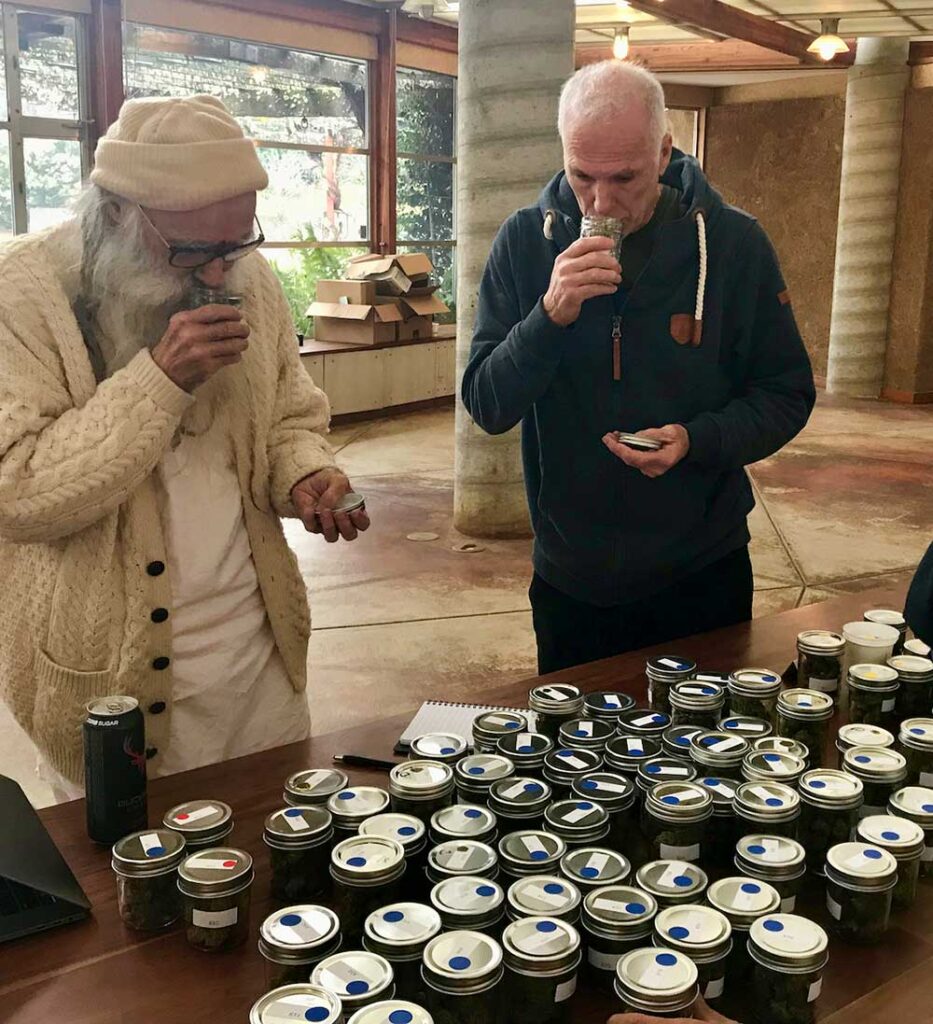
THC Potency Isn’t Everything
In 2010, the Emerald Cup began testing the entries for cannabinoids at SC Labs in Santa Cruz, with the seemingly surprising result that the winner did not have the highest THC. Every year since then, the winner of the Cup has never had the highest THC.
Soon, many cannabis labs were testing for the most dominant terpenes, as well as for cannabinoid ratios, on the assumption that the smell of the highest measured terpene would define the nose.
After ten years of testing over 200,000 samples, SC Labs performed a meta-analysis of their data. This revealed that about 40% of the tested flowers were myrcene dominant, followed by about 28% beta-caryophyllene, then terpinolene, pinene and limonene measuring between 12% to 10%, and ocimene measured dominant in about 1% of samples.
This was new and valuable information, bringing a whole new dimension of scientific understanding of what came to be called the entourage effect. Credit to Alec Dixon and Josh Wurzer at SC Labs for analyzing all the data and to Mark Lewis of Napro Labs for creating Phytofacts.

Understanding Terpenes
Beginning in 2021, the Emerald Cup entries, after testing by SC Labs, were organized according to Phytofacts’ six categories based on their dominant terpene. Using the percentages of nine primary and secondary terpenes in cannabis, the entries were divided into six categories: OGs and Gas Class; Tropical and Floral Class; Jacks and Haze Class; Sweets and Dreams Class; Desserts Class; and finally, the Exotics Class.
As a result, all the judges’ awareness of terpenes and their combinations was greatly advanced.
For the Emerald Cup in 2022, SC Labs measured the two highest terpenes, and in 2023—in some cases—they measured the highest three. As the judges learned more about these aroma classes and worked through the hundreds of anonymous entries in numbered glass jars, it became evident to the sophisticated and finely tuned noses of the flower judges that all the different smells couldn’t be explained by the dominant terpenes alone.
Some entry samples listed in the “OGs and Gas” class based on their dominant measured percentage of terpenes, actually had a floral or fruity “nose,” dry hit and flavor. Similarly, samples placed as “Desserts” were found to be gassy, or sometimes even floral. Many were clearly a mixture of several aroma classes.
Then there are always the savory smells: grilled or smoked meat, garlic, onion, burnt or tar aromas. What terpenes could they be? And where did the earthy smells come from: leather, oak and maple wood, or cedar, mushroom, forest duff, chocolate, coffee. None of these could be assigned to the classes based on the dominant terpene.
Even many fruity fragrances—strawberry, banana, and pineapple—it turns out, aren’t created by terpenes. In fact, they are created by esters.
We talk about terpenes because they clearly make up perhaps 40 to 50% of a cannabis flower’s aromas, but also because they are what the labs test for. Many other volatile organic compounds are produced by the plant but are not tested.
Where, then, do all of these various aromas and flavors come from?
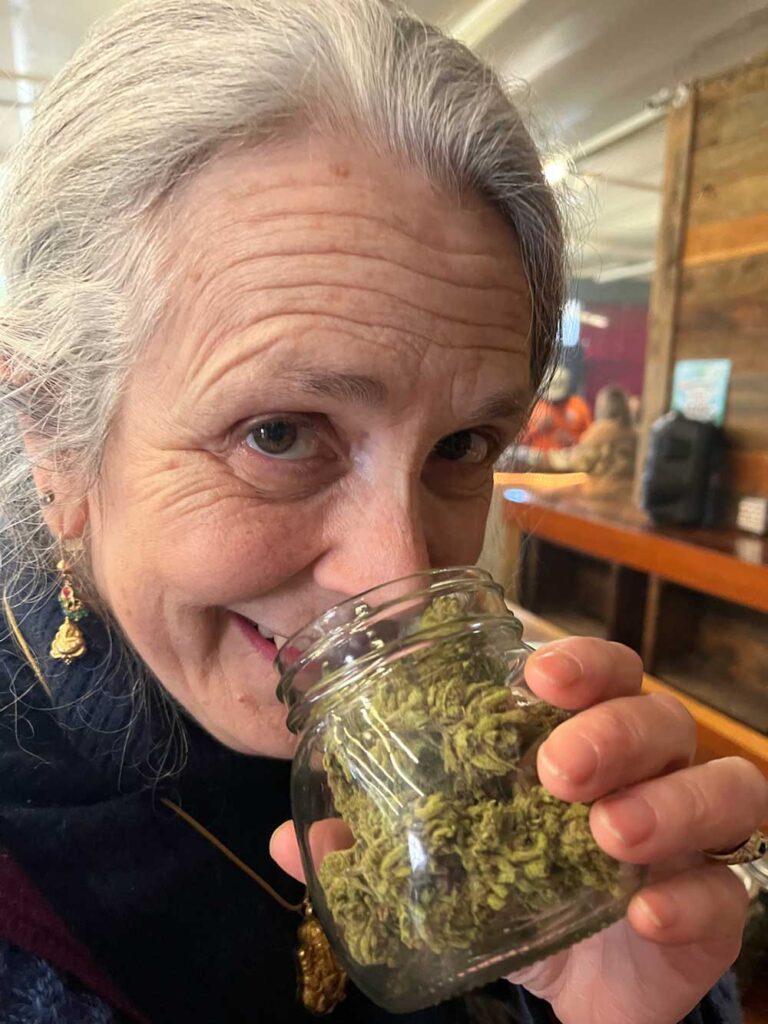
Taking It Further: The Aromatics of Cannabis
The aromas that all plants produce are for the purpose of attracting, repelling or signaling other organisms. These are called volatile organic compounds, or as I like to call them, “The Aromatics.” The particular fragrance produced by any plant is rarely from only one volatile compound or even one type of aromatic.
When Kev Jodhry, previously an Emerald Cup judge, organized the Golden Tarp Awards 2014, he decided to divide the entries into four distinct “categories of perception”: Floral, Fruit, Earth and Fuel. He says that this way of organizing the contest came from years of growing, breeding, selling and smelling cannabis, through which he began to recognize patterns of aromas and flavors. When this scheme was challenged by Dr. John Abrams of UCLA and the Clinical Endocannabinoid System Consortium (CESC), Jodhry sent him all the test lab data from the contest, and the scientist realized that the lab data supported the four categories of perception. That is, the “nose” of a cannabis flower—the aroma and flavor profile produced by the volatile compounds in cannabis—produced measurably different brain wave graphs in human lab testing, depending on which of the four smell categories were dominant in the sample.
Recently, a book was recommended to me by Aaron Varney, a fellow teacher in the Ganjier Training Program: Nose Dive by Harold McGee. In simple but scientific language, McGee explains which volatile organic compounds produce which aromas. In numerous charts he lists the component volatile smells of animals (cats, dogs) and humans (toe jam, urine, excrement, sweat), insect smells, barnyard smells, thousands of plant smells: fruits, flowers, mosses and trees and tree resins, spices, grasses, roots various gasses, solvents, alcohols, acids, nitrogen and sulfur volatiles, hydrocarbons, aldehydes, butane, hexane octane rubber, tar and so much more.
Cannabis plants can produce many of these volatile organic compounds, such as alcohols, acids, phenols, esters, thiols, benzenoids and sulfidic sulfides—all of which have a smell. It only takes a trace amount of these other compounds when combined with the terpenes to completely change the nose of the bud even though the cultivars may have the same dominant terpenes.
It would be reasonable to assume, then, that the numerous different volatile compounds in cannabis cultivars—not just terpenes—form many different aroma profiles to produce the total smell of the flower. And that these different volatile compounds would produce different mental states. This is the basis of aroma therapy. This is why we say: The nose knows!



